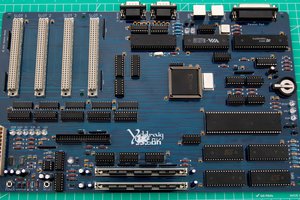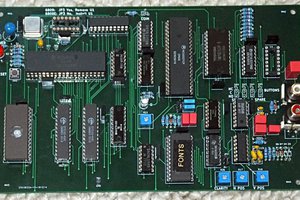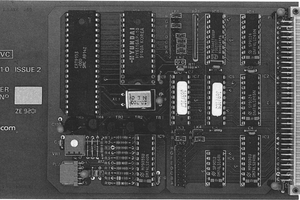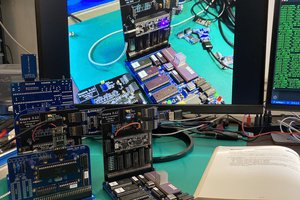Alas I don't have any more information than the catalogue page and pictures. I wasn't motivated to grab it because it was not very impressive.
zpekic asked if it was inspired by the design in the book Bit Slice Microprocessor Design, pages 47-89. I think it probably is, because you would not use this chip unless you were promoting the use of these chips.
However, if you are interested in how this board worked, the book would be a great place to start.
The book design seems much more complex than the SVA/SVB boards. It is switch-programmable for multiple video formats. The SVA/SVB boards were designed for industrial applications, where a simple fixed text display format was adequate.
Note that the files uploaded here are from the book design. They have been assembled by a clone of the AMD bit-slice assembler written by Holger Veit. The fact that they assemble just means the gross errors introduced by OCR have been weeded out. The output has not been tested on any hardware, because I don't have any.
Holger's assembler was very easy to get working. Download the code, modify a couple of lines in the makefile for Linux type machines, then run make. That generates an executable that you can use straight away. If you have a project called CRT then the usual expectation is file called CRT.def and CRT.src then you just type
./amdasm CRT
 Keith
Keith
 Stephen Moody
Stephen Moody


 Xark
Xark